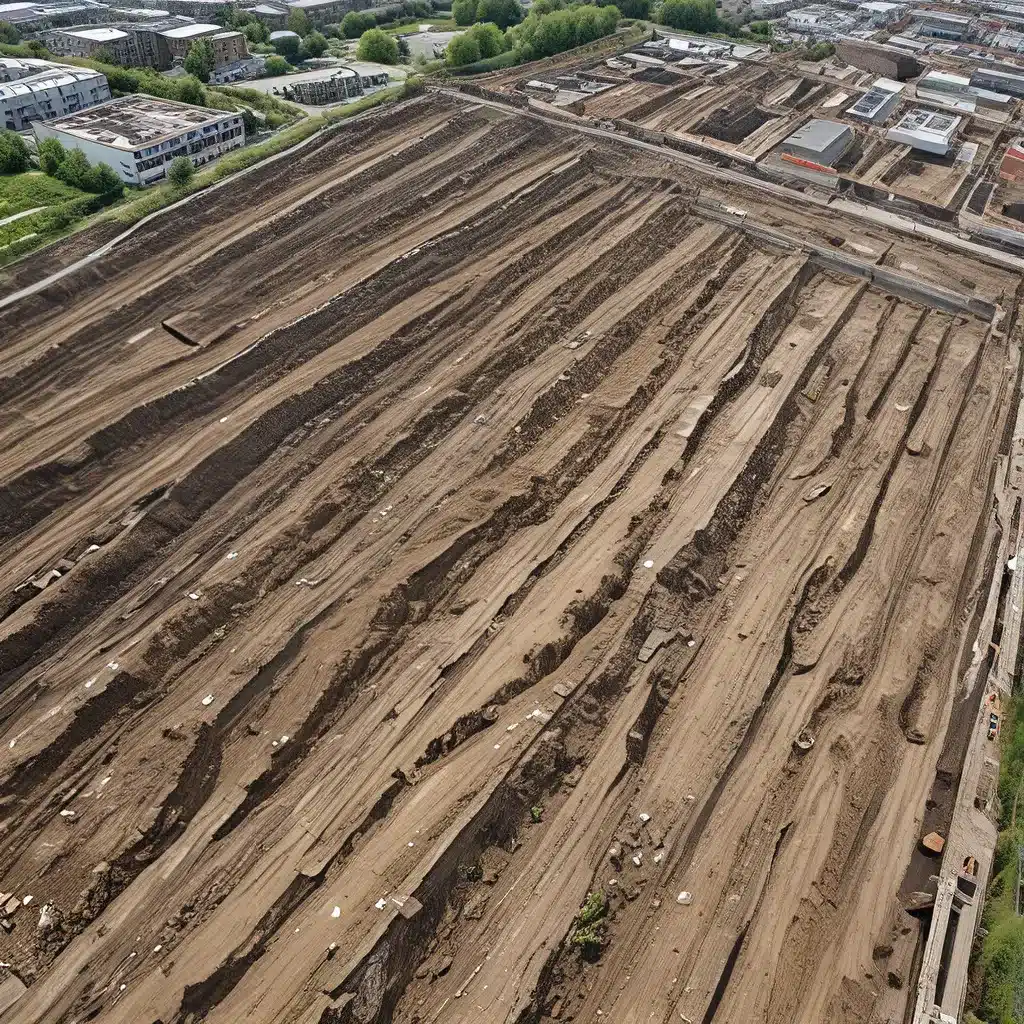
Reclaiming the Past, Envisioning the Future
Imagine a world where abandoned industrial sites and contaminated lands are transformed into vibrant hubs of ecological restoration and sustainable development. This is the promise of contaminated site regeneration – an emerging field that holds the key to unlocking a greener, more resilient tomorrow.
As the pressure on limited land resources intensifies and the demand for housing, infrastructure, and economic growth escalates, the regeneration of brownfield sites has become a vital component of sustainable urban planning. Vertase FLI, a leading environmental contracting specialist, has been at the forefront of this movement, utilizing innovative solutions to breathe new life into contaminated and underutilized lands.
Trend Spotting: The Evolving Landscape
Several key trends have shaped the future of brownfield site regeneration, opening up exciting new possibilities and approaches within the industry.
Integrated Land-Use Planning
There is a growing emphasis on comprehensive and integrated land-use planning that incorporates brownfield site regeneration within broader urban development strategies. This holistic approach ensures the sustainable use of land resources while addressing housing needs, infrastructure requirements, and environmental considerations.
Green Infrastructure
Brownfield regeneration projects are increasingly incorporating green infrastructure elements, such as parks, green roofs, and nature-based solutions. These features not only enhance urban biodiversity but also improve air quality and support climate change adaptation efforts.
Collaborative Partnerships
Successful brownfield site regeneration hinges on the collaboration between various stakeholders, including the public and private sectors, local communities, and environmental contractors. This diversity of perspectives, resources, and skills is crucial in delivering sustainable and inclusive outcomes.
Smart Technology
The adoption of smart technology, such as drones, remote sensing, and GIS systems, is gaining traction in the industry. These innovative tools enable more efficient data collection, analysis, and visualization, ultimately improving decision-making and optimizing the remediation process.
Innovative Solutions: Unlocking the Potential
As the industry evolves, exciting new solutions have emerged to address the technical, environmental, and social challenges associated with brownfield site remediation.
Risk-Based Assessment and Management
Implementing risk-based assessment techniques allows for a more targeted and efficient approach to site investigation. By prioritizing interventions based on potential risks to human health and the environment, resources can be allocated more effectively.
In-Situ Remediation Technologies
The development and application of in-situ remediation techniques, such as bioremediation and chemical oxidation, can be highly effective in treating contamination. These methods minimize disruption to surrounding communities and reduce the need for costly traditional “dig and dump” approaches.
Circular Economy Principles
Embracing circular economy principles in brownfield site regeneration projects, including material reuse, recycling, and waste minimization, contributes to resource efficiency and more sustainable outcomes.
Stakeholder Engagement and Community Involvement
Engaging local communities and stakeholders throughout the regeneration process fosters trust, understanding, and local buy-in. This increase in transparency and collaboration is crucial for the success and well-reception of these projects.
Vertase FLI: Leading the Charge
Vertase FLI, with its expertise in contaminated land remediation and brownfield site regeneration, is at the forefront of this transformative movement. The company’s commitment to innovation, collaboration, and sustainability ensures that projects are delivered with the environment, local communities, and the future in mind.
Vertase FLI’s comprehensive range of services includes:
-
Site Investigation and Risk Assessment: Thorough site investigations and risk assessments enable the early identification and management of contamination issues, ensuring regulatory compliance.
-
Remediation Strategy and Design: The team of experts develops tailored remediation strategies and designs, utilizing cutting-edge solutions to address site-specific challenges and meet the needs of various stakeholders.
-
Remediation Implementation and Project Management: Vertase FLI’s project management teams oversee all aspects of the remediation process, including cost and schedule control, stakeholder engagement, and environmental management.
-
Post-remediation Monitoring and Support: Vertase FLI’s ongoing commitment to delivering successful outcomes extends beyond project completion, offering post-remediation monitoring and support to confirm that environmental objectives have been met and to ensure long-term sustainability.
The Path Forward: Embracing a Greener Future
As urbanization and land scarcity create unprecedented challenges, the future of brownfield site regeneration lies in embracing emerging trends and innovative solutions that foster sustainable and inclusive development. By transforming contaminated and underutilized lands into vibrant green spaces and thriving economic hubs, we can unlock the potential for a greener tomorrow.
At Inland Waters Inc., we are committed to supporting this critical endeavor. Our expertise in environmental services and water treatment solutions can play a vital role in the successful remediation and revitalization of these brownfield sites, paving the way for a more sustainable and resilient future.
The journey ahead may not be without its challenges, but with the collective efforts of visionary companies like Vertase FLI, innovative thinkers, and collaborative communities, we can turn contaminated pasts into promising futures. So, let’s roll up our sleeves and get to work – the greener tomorrow we envision is ours to create.


